The Emerald Shores of Ireland - Part 12
A trip journal by David Bowers
9/2/08-9/11/08
Part 12
Banking done, we returned to the visitor's center. It was just about time to rejoin the group but not before a quick look through the gift shops and food options. We decided against any snacks, but I noted one of the gift shops had a big display of Ireland travel books. They are mostly picture books with some narration describing the key sites in Ireland. This same publisher "The golden book" has a series of titles covering several countries and US cities and states, so we have come to acquire a collection of their books as we have traveled. So for €11.99 I added a copy of their Ireland guide to my collection. For some reason the price annoyed me, mostly because I received a near useless Euro penny as change. My coworker just returned from Italy, and he remarked that their merchants rounded nearly everything to the nearest whole Euro, while I didn't notice that in Ireland, I did notice that most people rounded their prices either to the nearest 50 or 20 cent increment. I suspect the difference is pre-Euro Italy used the Lira which had gotten to the point where it took 2000 lire to make $1, with their smallest note being the 1,000 lire note. I recall from my trip there in 2001 that they had coins available for smaller amounts but they were seldom seen. With almost all prices being posted at the next 1,000L level, which leads me to believe that they just can't get their minds around fractional currency units., whereas Ireland used the Irish Pound which was based in structure on the British Pound, so for Ireland the transition to Euro still resulted in prices with a magnitude they are used to, including the fractional portion.
Having purchased this latest item, we got back on the bus and headed to our next stop Tralee. This was yet another pleasant drive past farms and fields, even a river running right alongside the road with what looks like a nice park on the other side. Did I mention the grass is much greener on the other side of the ocean? On the way there we drove around one of those pretty roundabouts I mentioned, in this case the Clashlehane Roundabout which features a nice football (soccer) statue in its center. This would also mean we must be nearing Tralee as the roundabout is bordered which shopping centers, which would suggest a major city. We also passed a graveyard, and from what I can tell they like to use stones that cover just about the entire ground area of the grave. I'm not sure if this means they are closer to vaults like in New Orleans or what, but they do look a lot more cluttered.
Back when Jerry was talking about sports, he mentioned that in Ireland their major sports divisions are by the county, and that each county has a unique set of colors that naturally become the team colors. The sports fans of the counties proudly decorate using flags, streamers and whatever else they can find in their counties colors. If you ever thought American sports fans were crazy with team flags and such, you haven't seen anything. In Ireland its not uncommon to see flags or other decorations with the county colors flying at nearly every home and business, sometimes with the adage that the more they decorate the better. Tralee is in County Kerry, which is yellow and green, so all over the county you see yellow and green decorations. Jerry also mentioned a program change for us involving the next two days. The change is that in the printed guide, dinner would be on our own today, and the tour would furnish dinner tomorrow, well they are moving the furnished dinner to tonight, and we will be responsible for tomorrow's dinner on our own. We pulled into Tralee which is a nice built up town that still retains its quaintness. Jerry mentions that this will be our lunch stop, just about half an hour or so for lunch. We do pull onto Denny Street which seems to be the main street here. In the center of the street is the Pikeman monument, commemorating the 1798 rebellion (to separate from Great Britain), and at the end of the street near where we parked are both the Kerry county museum (decorated in Kerry colors of course) and a rose garden, as in the Rose of Tralee.
Tour directors typically give a few suggestions and Jerry mentioned that if you wanted a fast lunch, that Micko's on the other end of Denny Street is a fast food restaurant, our you could try a pub or one of the hotels along Denny Street. He also mentioned that if we want french fries, the term is potato chips, and that if did want what we call potato chips, to ask for potato crisps. He cleverly did get a jab in, asking "or are they still called Freedom Fries in America?" Given the short time stop and wanting to geta a few photos, Bob and I headed to Micko's, besides this way I can see what Irish fast food is about.
We walk in and the dining room décor is out of the 1970's and the dining experience about what you would expect. You walk up to a service counter and here I was somewhat surprised that they described their hamburgers in ounces. I had thought the metric system would apply here as well. I went with the Big Micko which amounted to a double quarter pound cheeseburger, then I noted I could upgrade my meal for just €1 more. I took the upgrade and soon had the sandwich, a very large order of potato chips (fries) in a plastic box, and about a 20 oz. Coke. (Remember, the custom of refills has not yet been commonly adapted in Europe.) Bob ordered the single quarter pound cheeseburger, standard size and received what we would term small fries and a drink, almost a child size drink back home. Paying the counter attendant I was a bit dismayed that just this small fast food meal came out to about €10 or $15, especially in comparison to the cafeteria meals where we had gotten full dinners with two sides and a drink for just €2 more. We took our food over to a table, minding our heads on that low stairway right in the middle of the dining room.
We chose a table by the window to maximize our people watching ability. As for the food, the burger wasn't bad, and came fully loaded with just about every standard topping. The ketchup had a slightly different taste and texture to it but we didn't think it was a bad sandwich, In review, I noted that Mickos apparently doesn't have a website, and on Ireland forums tends to get low marks. I did note the wrapper for the hamburger proudly claimed it was made from 100% Irish Beef, and then I started noticing places that serve beef wanted to make that clear. I'm guessing in response to the mad cow disease over in the UK. The potato chips (fries) were above average in my book, not having a greasy taste to them at all, and I like the ketchup packets they used. Back home, ketchup packets are just way too small, here the packet resembles a long thin tube, I'd say at least 6 inches long. While eating I noted that while we just walked right up to the service counter, by the time we had started into our sandwiches, a sizeable queue had formed, so we evidently just beat the crowd. I did get the impression that they market to children just like our fast food restaurants used to do, with a bright colorful interior, and arcade machines. They had two of them, one being a claw game with the usual stuffed animal prizes, the other machine being much more dubious looking. It's a crane machine variant where instead of a crane you operate an electromagnet suspended by a cable. You move the magnet around the case just like on a crane game the difference is the prizes are in little plastic boxes with a metal ring at the top. Protecting the metal ring is a plastic lip that sticks up an inch or so surrounding the metal ring. The catch is that the dangling electromagnet won't pick up the box unless it can fit all cleanly inside the plastic lip. It's a very hard machine to win, and back in the States the boxes usually contain jewelry or nice lighters. In this place, the plastic boxes are filled with money, and the machine proclaims "Win up to €50!" Looking around I did see at least one box that held a €50 note. I noted the cost per play was €1 and decided to not try for it. The people playing this machine, mostly children.
After we had finished our meal I took a walk upstairs where the restrooms were located. I know I promised not to bring up restrooms unless something noteworthy came up. I think this one qualifies, in fact let's just get it out of my system. As I might have mentioned, they don't use ephuseums and are more likely to label these particular facilities "Toilets", sometimes in large type Short, simple, tells you exactly what you need to know, even if it may sound crude to us. I went into this particular toilet, and when I was done I looked around for the sink. Not finding a traditional sink, I saw two semicircular holes built into the wall at just about the right height. Noting it had a nozzle on top and a small basin with drain at the bottom, I stuck my hands in. Here I found where the industrial age meets the bathroom sink.
When I inserted my hands and tripped the sensor ,the thing went through its cycle, first dispensing a little bit of soap, and then pausing, then letting the water run for a few seconds, pausing again, then an air blower turned on for a few seconds, all in one unit. A remarkable machine designed to be vandal proof, while conserving water and other resources, as well as being space saving and promote sanitation by being totally hands free. Why then, is this hands free bathroom wonder sitting next to what might be the only manual flush urinal I saw in Ireland. Manual flush is so rare they felt the need to post a large sign with large bold type right above the button begging you to flush. Traditionally in England and Ireland, urinal flushing is all automatic, not by way of sensors but by a timing device. As I understand it the timing device can be as simple as a toilet tank mounted on the wall high above the urinals, water slowly fills the tank, and when a float valve detects the tank has filled to a certain level, the tank dumps, flushing the urinals, and then starts to refill. The urinals themselves, while starting to be replaced by individual units, in most places are still troughs or in its simplest form, just a designated wall to face while you do your business. A gutter at floor level alongside the designated wall carries the waste away, and water runs down the wall to flush it. In some places they have installed dividers to make it feel a bit more civilized, or in some cases have retrofitted it with modern individual urinals, though you can see the floor gutter still in place. Now, aren't you glad I got that out of my system?
We left Micko's but not before noting something clever they do at the trash bins. One major annoyance has to be partially finished drinks that add weight to the trash bags, so next to the trash cans they have a basin, no plumbing, so it probably just runs into a bucket or tub specifically for you to pour unfinished drinks into. Across the street is a Penny's store, I don't know if its related to our JC Penny's but they had a Kerry sportswear window display. At the end of Denny Street is something that when I first saw it, I thought it was really neat, now I'm not so sure. It's a traffic island with crosswalks to all three sidewalks bordering the intersection. The idea is to cross the street, no matter where you want to cross to, you first cross to the traffic island and then cross again to your destination, Looking back on it, this means you have to cross twice to get anywhere, where if the island was omitted you would only have to cross once. I'm wondering if the island has more to do with traffic flow than making life easier on pedestrians. At any rate it gives a great place to photograph the pikeman statue and the street in general.
As we walked back down Denny Street, we noticed what looked to be the wiring frames for some light up roses that we guessed make the street look nice at night, Speaking of pretty were some of the doorways and sides of buildings that had flowers covering the whole façade of the building, neatly trimmed so as not to block the windows or doors of course. When we got back to the museum end of the street, we carefully crossed back over and looked in the rose garden for a few moments. At just about this time it was time to board the bus to head to our next stop.
On the way out of Tralee, Jerry pointed out the Hotel Brandon where we would be staying the next two nights, and then we set out on the road passing the Blennerville Windmill, Ireland's largest still functioning windmill. The road out of Tralee followed alongside a river and had some other interesting buildings, like the round building near the Pier 17 sign. On the way to our next stop, Jerry wanted to discuss plans for the next day. We have in our schedule some time to see Killarney National Park which was left as free time. Jerry offered us some options for our free time in the park. The first option was that he would be happy to lead us on a walk around the park and walk around the gardens and exterior of Muckross House. He would be willing to do that for us at no extra charge. Alternatively for an extra charge, he could arrange either a ride through the park in a jaunting car. A jaunting car, as made famous in the movie The Quiet Man, is a variant of the horse and buggy ride. The key difference seems to be that the seats face sideways. Jerry indicated that the driver of the jaunting car, known as a jarvee, usually provides a narration of the tour, however it is also customary for their narrations to be nearly indecipherable, even with a firm grasp on the local dialect. The attraction here is you get to ride instead of walk, and the jaunting car is a uniquely Irish experience. Jerry could arrange this for us at a cost of €10 per person. Option three is that the park has several large and connected lakes, and he could arrange to hire a boat and captain to take a cruise along the lakes of the park, for this option we would need the majority of the people to commit to taking the cruise in order to get the per person cost down to a reasonable level, also €10. Again a narration would be provided, and he mentioned that all three options would cover much the same area. He was asked about the weather prediction and he responded that it was supposed to be nice, but rain is always a possibility in Ireland. It was also noted the boat would have a canopy for just such an event. Jerry said no need to rush to a decision, to be thinking about it and he would take a vote towards the end of the days activities.
We nest headed towards Dingle. I could tell the way to Dingle was going to be rugged when the road narrowed down to maybe 1.5 vehicles wide, if that, and featured numerous curves. Jerry noted the road follows the route of the old railway, and at some points you can still see remnants of the railway trestles and lines. It seems that owing to the topography of the land that they could not build a straight railway, instead it too had numerous curves, which had the effect of totally eliminating and speed advantage the railway may have had, thus it fell into disuse. Jerry did tell the tale of an unusual railway, evidently the train had two sets of hanging cars with the track in the middle of the two cars. The trick is that both halves of the train had to be kept balanced in weight, so at every station stop, it was necessary to move passengers and cargo around to keep the load balanced. This made things particularly tricky on farmers who wanted to sell livestock, and take the train. They had to take two calves for every cow they wanted to trade. On the way to the city the cow would ride in one car and the two claves in the other, if the cow was sold on the way back the calves rode separate one on each side. The drive along the Dingle peninsula is a very scenic drive with the sea on one side of you, and those patented Irish heather lined fields on the other. We were once again awarded with a wonderful day weather wise, nice and sunny, no fog. Better yet, per the established seat rotation program it was our day up front.

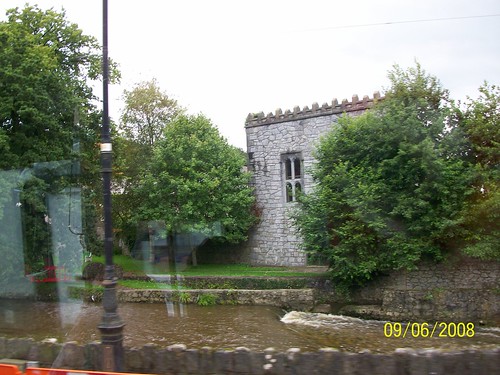
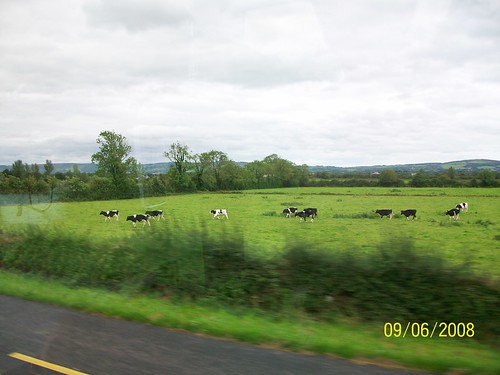



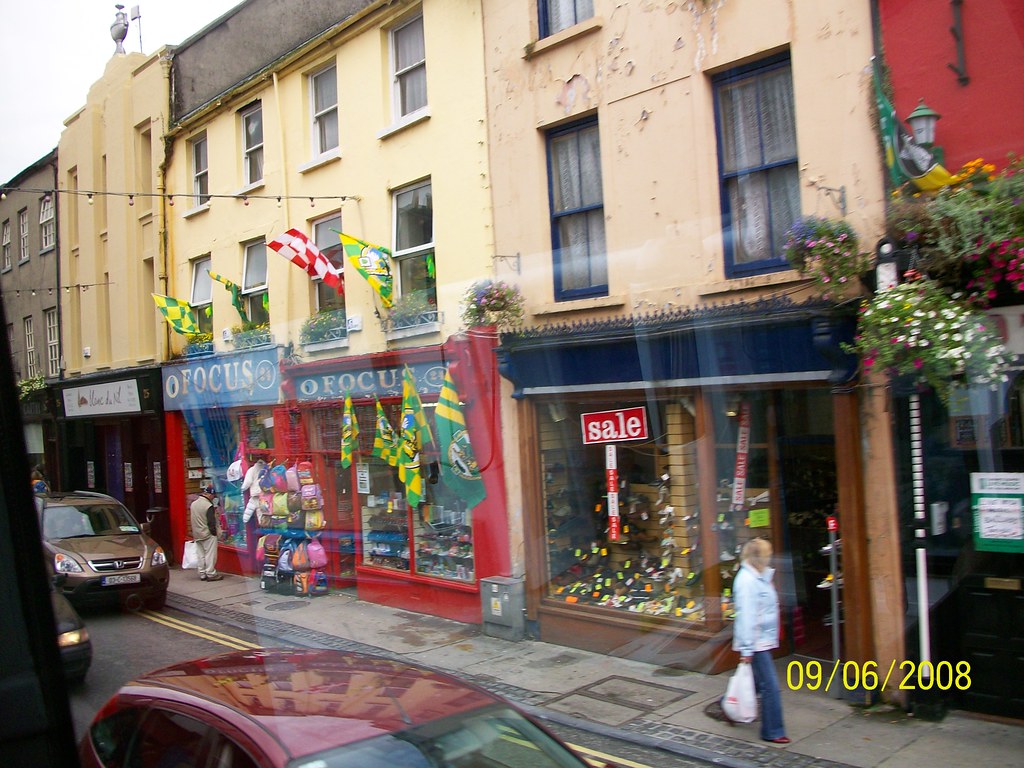

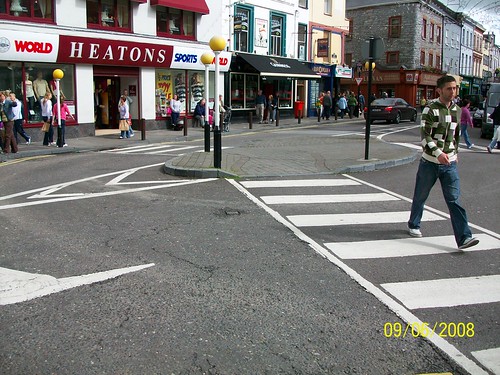
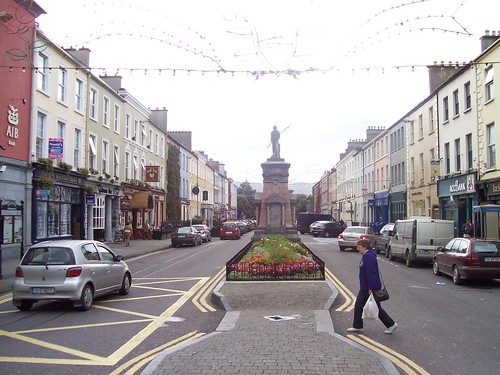
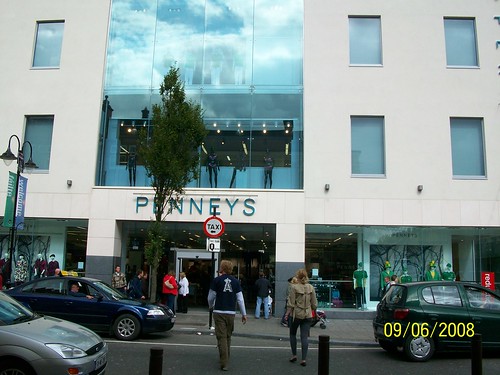
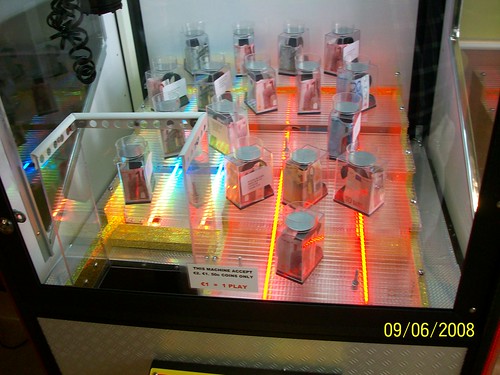
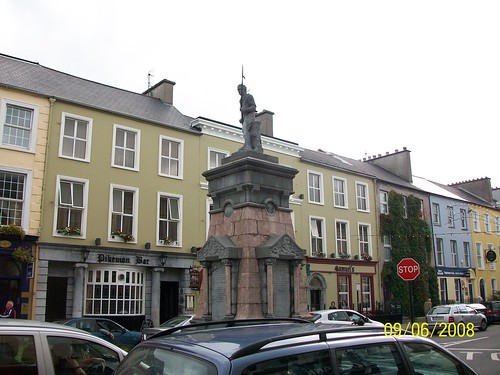
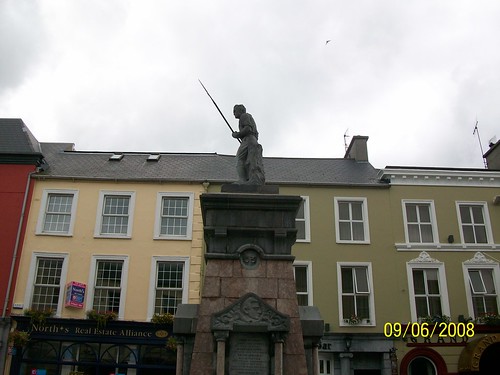
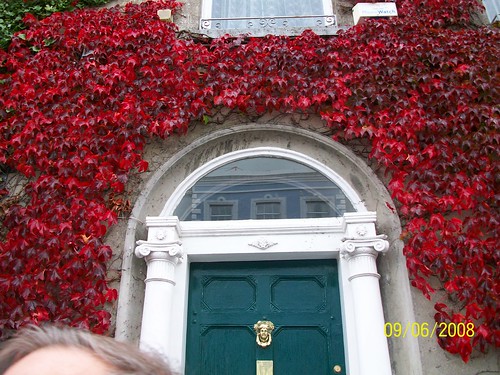
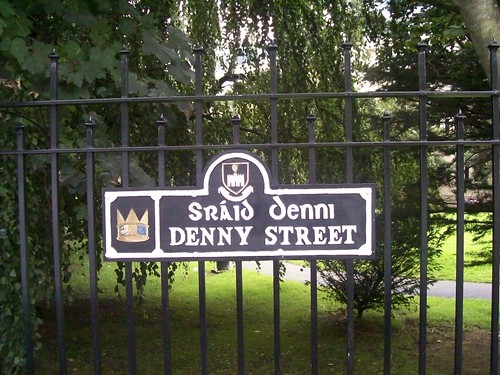

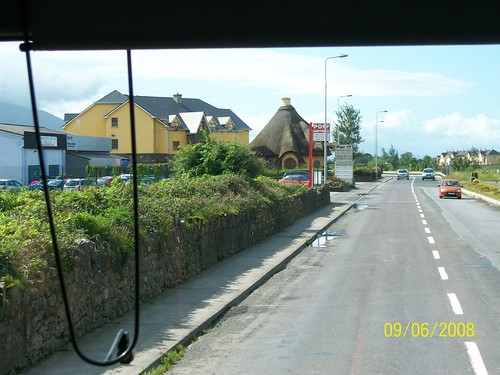
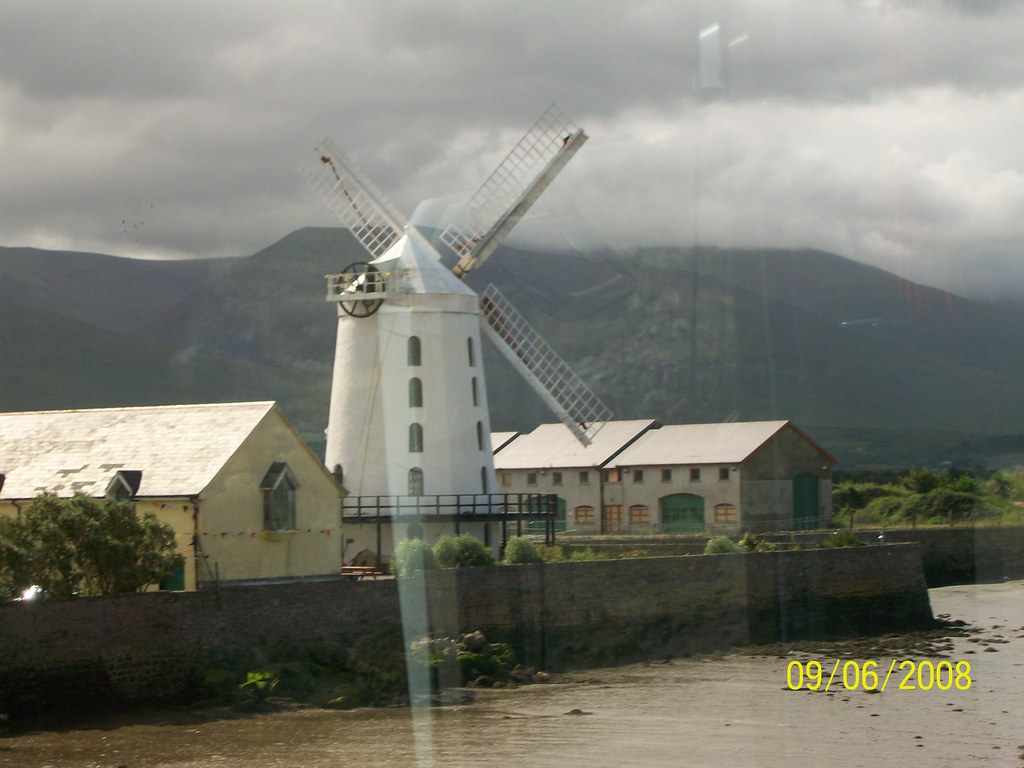
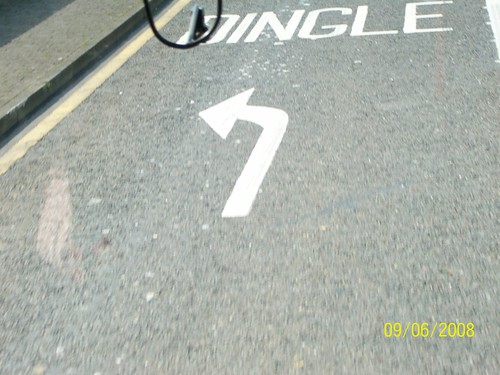
0 Comments:
Post a Comment
<< Home